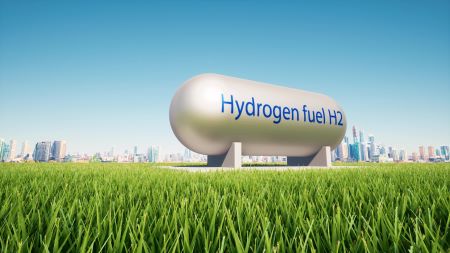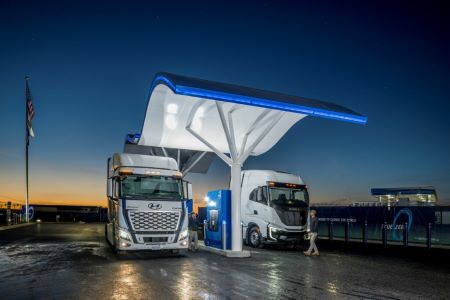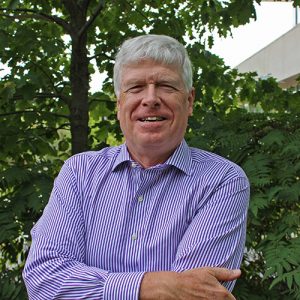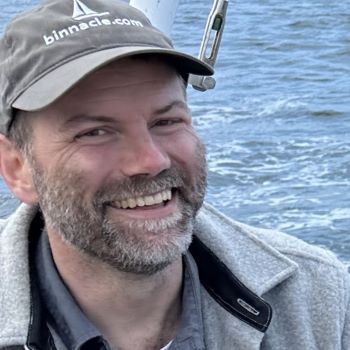Canada’s low-carbon hydrogen industry is growing and hydrogen has important role in clean energy transition
NOTE: This is Part 1 of a two-part series about the federal government’s most recent progress report on Canada’s hydrogen strategy. Part 1 looks at the current state of Canada’s hydrogen industry, including end-use projects and hydrogen hubs, and at the findings of several modelling initiatives that examined the future role of low-carbon hydrogen within Canada’s overall energy system. Part 2, to be published on July 16, looks at initiatives from the federal government to support hydrogen development and production in Canada. Part 2 also includes recommended strategic priorities to guide collective actions during the next reporting period (2024 to 2026).
 Approximately 80 low-carbon hydrogen production projects have been announced across Canada, representing an expression of interest of over $100 billion in potential investment, according to the federal government’s progress report on its national hydrogen strategy.
Approximately 80 low-carbon hydrogen production projects have been announced across Canada, representing an expression of interest of over $100 billion in potential investment, according to the federal government’s progress report on its national hydrogen strategy.
Hydrogen hubs are forming, such as in Edmonton, Vancouver and Southern Ontario, to match low-carbon hydrogen supply with demand, the report says.
Potential buyers in Europe and Asia have shown strong interest in establishing partnerships with Canadian hydrogen export producers, bringing opportunities for sustainable clean job creation in Atlantic and Western Canada and global emissions reductions.
Also, provinces are complementing Canada’s Hydrogen Strategy with their own provincial strategies and leading the development of provincial funding programs, policies and supportive measures.
“Since 2020, the developments show that low-carbon hydrogen can play a key supporting role alongside electrification to decarbonize our economy, and an essential role in meeting global energy needs in the context of energy security, the energy transition and the broader climate imperative,” the report says.
There are 13 low-carbon hydrogen production facilities operating in Canada, comprising six electrolytic facilities and seven projects that have adopted carbon capture to lower the emissions of traditionally carbon intensive hydrogen production.
The Air Liquide 200-megawatt electrolyser in Bécancour, Quebec began operating in 2021 and was the largest electrolyser plant in the world at that time.
Deployed low-carbon hydrogen production capacity now amounts to 3,450 tonnes of hydrogen per year.
An additional 5+ megatonnes per year of low-carbon hydrogen capacity has been announced or is under development.
There are now 12 international agreements on hydrogen, six provincial strategies, 23 announced export projects and eight hydrogen hubs formed or forming.
End-use applications for low-carbon hydrogen include:
- Seven truck and bus projects in progress.
- Four train trails underway.
- Eight hydrogen fuelling stations built.
- 21 hydrogen fuelling stations announced.
- 22 codes and standards developed.
- 3,600 Ontario households current serviced by hydrogen-natural gas blends.
- 2,100 Alberta customers receiving hydrogen-natural gas blends.
- 13 project partnerships with Indigenous involvement.
The federal government has committed $17.7 billion in investment tax credits for clean hydrogen production.
The hydrogen industry now supports 4,291 full-time equivalent jobs, and revenues of Canadian hydrogen sector companies were $527 million in 2021, according to the report.
Hydrogen end-use projects encompass multiple sectors and applications
Transportation
 Vehicle refuelling:
Vehicle refuelling:
Hydrogen refuelling networks are developing in British Columbia, Quebec, Ontario and Alberta, which will enable more widespread fuel cell electric vehicle adoption, including in commercial applications.
- HTEC has built a network of five operational light-duty vehicle hydrogen fuelling stations across B.C., with more planned for construction.
- Hydrolux’s “Trans-Québec 1” project includes the development of seven hydrogen refuelling stations equipped with five-megawatt electrolysers.
- Air Products is planning to build Alberta’s first commercial refuelling station near its net-zero hydrogen production complex for both heavy-duty trucks and light-duty cars.
- Greater Toronto Airports Authority is working with Carlsun Energy to develop Ontario’s first public hydrogen refuelling station at Toronto Pearson, with $1 million in funding from Natural Resources Canada’s ZEVIP program.
Trucking and freight:
Hydrogen powertrains, whether based on fuel cells or combustion, provide the best path forward for heavier truck classes needing the significant range, higher energy density and faster refilling times of hydrogen. New hydrogen-platform business and truck models are being developed and early demonstration projects have been announced or are planned.
- The Alberta Zero Emissions Truck Electrification Collaboration (involves the demonstration of two heavy-duty, Class 8 fuel cell electric trucks that will transport freight year-round between Edmonton and Calgary.
- The Alberta Motor Transport Association has launched a “Hydrogen Vehicle Road Show” to deploy hydrogen vehicles into member company fleets to build awareness, comfort and interest in hydrogen vehicles
- C.-based Hydra Energy has received orders for over 80 of its hydrogen-diesel dual-fuel retrofits, which use up to 40 percent hydrogen and will also support deployment with the construction of the world’s largest hydrogen fuel station, to be commissioned in 2024.
- C.-based HTEC is receiving $16.5 million from the B.C. government for the Pilot Hydrogen Truck Program to procure six heavy-duty fuel-cell trucks and complete updates to a hydrogen-fuelling station in Tsawwassen and a maintenance facility in Abbotsford.
Urban transit:
Hydrogen fuel cell buses (FCEBs) are well suited to longer routes, such as bus rapid transit, suburban, or regional commuter routes, and while battery electric buses have a 23-percent reduced range in winter, FCEBs provide the same operating range year-round. More than 4,000 FCEBs have been deployed worldwide.
- Edmonton Transit and neighbouring Strathcona County are conducting a pilot trial of two hydrogen buses that are currently in service.
- Winnipeg Transit, through its “Transition to Zero Emission Program,” is planning to deploy 33 buses by 2027, with a target of eight fuel cell buses by 2024.
- Mississauga is exploring funding for the MiWay Hydrogen FCEB pilot project to trial 10 buses.
- Brampton is planning to have two demo buses by 2025 as part of its Zero-Emission Bus Study.
- Halifax Transit is considering a bus depot retrofit to switch 40 to 60 buses to hydrogen.
Trains:
Rail’s energy intense duty cycle and long ranges makes it a sector that is particularly challenging to electrify. Pilot projects are underway that will provide information on the performance and potential opportunity of hydrogen trains in Canada.
- In Quebec, Alstom piloted a Coradia iLint Hydrogen train from Montmorency Falls to Baie-Saint Paul over the summer of 2023, carrying more than 10,000 passengers over 130 trips, saving 8,400 litres of diesel and averting 22 tonnes of CO2
- In B.C. and Alberta, Canadian Pacific Kansas City and Southern Railways are retrofitting diesel locomotives, with ATCO constructing one-megawatt electrolysers at Calgary and Edmonton railyards.
Aviation:
Hydrogen can enable decarbonization of airport operations through deployment of FCEVs and may also help decarbonize aviation through the use of fuel cell planes and hydrogen’s use as a low-carbon alternative fuel or in the production of sustainable aviation fuel.
- Edmonton International Airport is planning to convert some of its airport operations vehicles, including trucks and buses, to hydrogen and is in the early stages of exploring infrastructure for hydrogen aircraft (it added 100 Toyota Mirai hydrogen FCEVs to its fleet in June 2023).
- DeHavilland and ZeroAvia signed a memorandum of understanding in 2022 to collaborate on a hydrogen fuel cell powered Dash 8 aircraft.
- Avmax AirCraft ordered 20 turboprop regional hydrogen aircraft and fuel from Universal Hydrogen.
Port operations:
Projects are underway to demonstrate hydrogen in port operations through terminal tractor, yard and Class 8 drayage truck vehicles.
- C. is providing $4 million through its Commercial Vehicle Pilots Program and Advanced Research and Commercialization program to the BC Hydrogen Ports Project to demonstrate hydrogen at the Port of Vancouver, led by a consortium of companies headed by HTEC.
- The Port of Montreal took delivery in June 2022 of two hydrogen-powered equipment prototypes, including a terminal tractor, to pilot deployment at the port.
Heavy Industry
Petroleum refining and petrochemicals:
Projects are announced and operational to capture carbon from (carbon-intensive) hydrogen production at existing facilities. New developments could achieve capture rates up to 98 percent when paired with autothermal reforming.
- Shell’s Scotford Upgrader captured 77 percent of its carbon emissions in 2022 from producing hydrogen used for upgrading bitumen to produce synthetic crude, surpassing 7.7 million tonnes of injected CO2 since project start-up.
- Nutrien’s Redwater Sturgeon refinery and fertilizer plants have implemented carbon capture, utilization and storage, using the Alberta Carbon Trunk Line, transporting 1.6 megatonnes of CO2annually for storage and use.
- DOW announced plans in 2021 to construct the first worldwide net-zero polyethylene facility in Alberta, which would make use of a hydrogen-fuelled ethylene cracker.
Steel:
The steelmaking sector estimates $3 per kilogram g of hydrogen, equivalent to three to four times what the industry currently pays for natural gas, is required for hydrogen to be economical as a heating fuel or reductant.
- ArcelorMittal Dofasco in Ontario plans to end the use of coal in its plants, by installing a direct reduced iron plant and electric arc furnace. The direct reduction process will operate with natural gas to begin with, but will be hydrogen-compatible to transition to low-carbon hydrogen fuel as soon as cost-competitive supply is available
- At its steel plant in Contrecoeur, Québec, ArcelorMittal has successfully tested replacing 6.8-percent natural gas with low-carbon hydrogen during a 24-hour period to produce direct reduced iron, contributing to a measurable reduction in CO2
Biofuel production:
Hydrogen can be a feedstock in the production of synthetic fuels and biofuels, including e-methane, e-gasoline, sustainable aviation fuel and e-methanol, which is gaining traction as a low-carbon marine fuel for shipping.
- Varennes’ biorefinery and hydrogen electrolysis project will produce biofuels from waste (wood and non-recyclable materials) and will include a 90-megawatt Cummins electrolyser. The project is receiving $277 million in financing from the Canada Infrastructure Bank.
- Imperial Oil Strathcona refinery in Alberta plans to combine natural gas-derived hydrogen, carbon capture and a biofeedstock combined with a proprietary catalyst, to produce low-carbon renewable diesel.
- Tidewater Renewables at the Prince George Refinery in B.C. is Canada’s first stand-alone renewable diesel refinery that has recently completed construction and will soon begin production of low-carbon hydrogen.
- Braya Renewable Fuels is partnering with ABO Wind to power the Come By Chance Refinery in Newfoundland and Labrador with low-carbon hydrogen by 2027 and begin exporting biofuels to foreign markets by 2028. The project was provided $37 million in funding from the Clean Fuels Fund and $49 million in funding from the Strategic Innovation Fund.
Blending and energy storage:
Blending pilots and feasibility studies are underway across Canada. The Canadian Standards Association has acknowledged that blending up to five percent hydrogen by volume is covered under current certifications for appliances.
- Enbridge’s 2.5-megawatt power-to-gas and natural gas blending project in Markham, Ont. is currently servicing 3,600 households with up to a two-percent blend of hydrogen in its natural gas, reducing GHG emissions by 117 tonnes per year. The project was provided $882,000 in funding from Sustainable Development Technology Canada and $1.8 million from Ontario’s Hydrogen Innovation Fund.
- In October 2022 in Alberta, ATCO began delivering a blend of natural gas containing five percent hydrogen by volume in Fort Saskatchewan, safely servicing 2,100 customers
- ATCO and Qualico are currently studying the logistics, technology requirements and other considerations in safely and affordably developing a 100-percent pure hydrogen community in the proposed Bremner 100% Hydrogen Community in Strathcona, Alta.
- In 2023, ATCO and Certarus partnered to fuel the Edmonton Convention Centre in Alberta with a 20-percent hydrogen blend when it hosted the 2023 Canadian Hydrogen Convention.
- In Quebec, Evolugen and Gazifière’s 20-MW Masson electrolysis project in Gatineau will produce approximately 425,000 gigajoules of low-carbon hydrogen for injection into Gazifière’s natural gas distribution network, reducing GHG emissions by approximately 15,000 tonnes per year.
- FortisBC is exploring opportunities to blend hydrogen into the natural gas system in British Columbia and is advancing a technical blending study in collaboration with Enbridge.
Electricity and energy storage:
Projects underway or under consideration are demonstrating that hydrogen can decarbonize former coal or natural gas power plants or provide medium-term energy storage, grid stabilization, or to short-term storage to avoid excess renewables curtailment.
- In July 2022, Heartland Generation in Alberta announced it would convert the Battle River Generating Station, a former coal facility, to operate on 100-percent clean hydrogen produced using autothermal reforming technology with a carbon capture rate of 98 percent. Combined with an open access carbon capture hub, if fully utilized, the project could reduce five megatonnes of GHG emissions annually.
- Niagara Hydrogen Centre, to be built, owned and operated by Atura Power, will be Ontario’s largest low-carbon hydrogen production facility. It will deploy a 20-meagawat electrolyser in the City of Niagara Falls, Ont., to produce low-carbon hydrogen while supporting the Sir Adam Beck hydroelectric facility’s provision of grid regulation services for the Ontario electricity grid.
- Triple Point is considering a major salt dome storage project near Stephenville, Newfoundland and Labrador, with potential to store more than 35 million cubic metres, or the equivalent of 180,000 tonnes of hydrogen, which could be used to store hydrogen destined for export or to store electricity from renewable generation as compressed air.
Number of existing and planned hydrogen hubs is growing
- The Edmonton Region Hydrogen Hub includes more than 25 projects across the value chain. The hub has Indigenous co-chairing and has received more than $2 million in government funding. It has launched the 5,000 Hydrogen Vehicle Challenge as an initiative aimed at getting 5,000 hydrogen powered vehicles, such as buses, trucks or farm equipment, on the road in Western Canada within five years.
- The Vancouver area is a major hub of Canada’s hydrogen innovation, fuel cell and manufacturing companies and has the greatest concentration of operational hydrogen refuelling infrastructure. Simon Fraser University and the University of British Columbia are both leading hydrogen hub initiatives for production, innovation and technology testbeds.
- British Columbia considers the Prince George hub as an ideal location for a central hub given its existing infrastructure and is co-developing a study with the city to advance development.
- Sarnia-Lambton has outlined a hydrogen hub proposal, forecasting hydrogen demand to increase up to one megatonne annually by 2050. The hub would service petroleum refining and ammonia for fertilizers and have the benefit of nearby salt caverns for reservoir storage and connections to U.S. markets.
- The Air Liquide hydrogen production plant in Bécancour will be part of Quebec’s “Vallée de la transition énergétique” announced in May 2023, providing a supply of clean hydrogen to seven clean energy, innovation, and industrial decarbonization projects that are receiving over $8 million in funding from Quebec
- Calgary recently launched a hydrogen hub and early-stage hubs are under consideration in Selkirk, Man. and Grey-Bruce, Ont.
The future role of low-carbon hydrogen in Canada’s energy system
Since the hydrogen strategy was announced there have been several modelling initiatives that looked at the future role of low-carbon hydrogen within Canada’s overall energy system, including scenarios in which Canada reaches net-zero emissions by 2050.
The progress report looked at six recent national modelling initiatives from a variety of organizations that provided a range of possible outcomes for future hydrogen consumption, production and exports. The six modelling initiatives included:
- Canada Energy Regulator (CER) – Canada Energy Futures 2023
- ESMIA Consultants– Modelling Hydrogen’s Potential Across Multiple Sectors of the Canadian Economy, prepared on behalf of Natural Resources Canada.
- Environment and Climate Change Canada – Exploring Approaches for Canada’s Transition to Net-Zero Emissions.
- Canadian Climate Institute – Canada’s Net Zero Future.
- Navius Research – Canada Energy Dashboard.
- Trottier Institute – Canadian Energy Outlook, Pathways Explorer.
The federal government’s progress report notes that none of the scenarios created by the models is a market forecast. Other than certain “current measures” scenarios, they represent what the energy system could look like in scenarios where Canada reaches net zero by 2050.
Also, none of the scenarios includes the federal Clean Hydrogen Investment Tax Credit (CHITC) in their underlying assumptions, as the initial design details were not available at the time the modelling was completed.
While some scenarios assume a certain level of hydrogen exports from Canada, the export potential is not based on an extensive assessment of future global demand and Canada’s potential role.
According to the progress report, the results of the six modelling initiatives lead to these findings:
- Overall, up to 18 percent of Canada’s total energy use could be provided by low-carbon hydrogen by 2050. Most projections fall in the range of three percent to 12 percent. The scenarios that assume supportive policies or cost reductions could be seen as a proxy for scenarios that include the CHITC. These scenarios fall in the range of projecting 12 percent to 18 percent of Canada’s total energy use.
- Most scenarios project low-carbon hydrogen to be a viable and economical decarbonization option in hard-to-abate sectors such as medium and heavy-duty transportation (trucks, buses) or heavy industry (refining, petrochemicals, steel). Hydrogen used in transport could range from 12 percent to 35 percent of the sector’s energy use in 2050 and up to 18 percent of energy consumption in industry.
- The majority of scenarios project total low-carbon hydrogen production to range from 6 million to 20 million tonnes per year, but the models vary in projecting whether this production would generally come from electrolysis, natural gas with carbon capture or biomass with carbon capture.
- Exports of hydrogen could play a large role in spurring sector growth, with the scenarios focused on estimating potential exports projecting the highest levels of potential jobs and economic benefits. Not all scenarios considered exports, and for those that did, there is no available projection of the future growth of the global low-carbon hydrogen market to aid in the analysis.
- Few of the modelling initiatives were expressly designed to estimate emissions reductions from low-carbon hydrogen uptake. The overall range of emission reduction results in 2050 was from 17 megatonnes (Mt) to 69 Mt in domestic reductions (or up to 109 Mt in global reductions when considering exports). The midpoint of this range would correspond to approximately six percent of Canada’s 2020 emissions, in line with the International Energy Agency’s global Net-Zero Scenario that found that six percent of global cumulative emission reductions from 2021 to 2050 were projected to come from low-carbon hydrogen displacing fossil fuels.
See also the op-ed in this week’s Innovation This Week: Is hydrogen a net-zero saviour or a fantasy?
R$
Events For Leaders in
Science, Tech, Innovation, and Policy
Discuss and learn from those in the know at our virtual and in-person events.
See Upcoming Events
You have 0 free articles remaining.
Don't miss out - start your free trial today.
Start your FREE trial Already a member? Log in
By using this website, you agree to our use of cookies. We use cookies to provide you with a great experience and to help our website run effectively in accordance with our Privacy Policy and Terms of Service.





